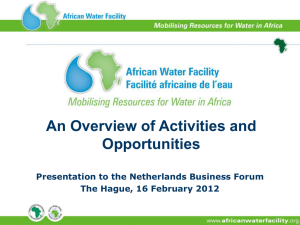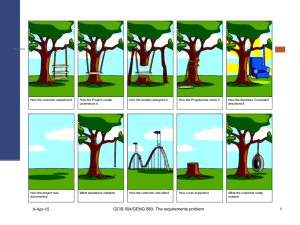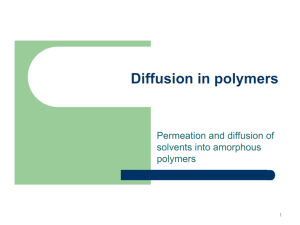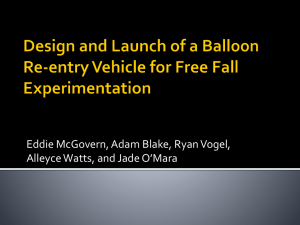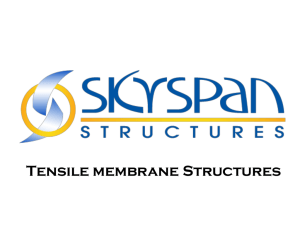T-11 Air Permeability Investigation
advertisement
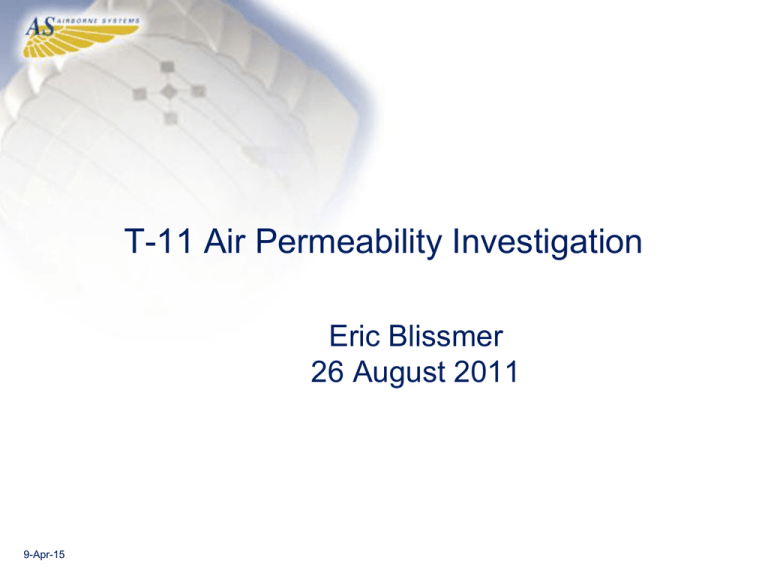
T-11 Air Permeability Investigation Eric Blissmer 26 August 2011 9-Apr-15 Disclaimer • We will NOT identify any specific details of which supplier(s) that are involved with this investigation • We will NOT address specific root cause and corrective actions taken by any supplier(s) • We will NOT engage in any discussions related to proprietary process or information 9-Apr-15 Outline • • • • • • • 9-Apr-15 Problem Statement Background Information Root Cause Investigation Measurement Systems Analysis Raw material results Final canopy (MIL-DTL-6645) results Conclusions Problem Statement • While inspecting finished canopies in accordance with MIL-DTL-6645 per contract requirements, approximately 10% of T-11 main and T-11 reserve canopies built in May, June and July of 2011 were found out of tolerance for air permeability 9-Apr-15 MIL-DTL-6645 (T-11 Mod) Air Perm. Inspection Yellow = Center S/O: section LOT #: 17 16 15 14 13 12 11 x x x x S/N: points X = Inspection TESTED BY: (single reading) x x x 18 x x x 10 19 9 x 20 x x x x x x 8 21 22 7 x x x x x x x x x x 23 24 x x 6 5 x x x x x x x 1 2 3 x x x 25 9-Apr-15 x 26 27 28 4 Background Information • Investigation started with industry notification of suspect lots of material based upon high air permeability readings at a prime contractor on finished T-11 canopies • Increased sampling was initiated on completed canopies and out of tolerance canopies were identified • Some out of tolerance canopies used materials from lots not originally suspect • Led to investigation of all canopies and components built with PIAC-44378 Type IV and Type VI 9-Apr-15 Root Cause Investigation • Worked closely with Government and Supplier(s) on identifying the root cause • Process anomalies were identified which correlated with the high readings (4.0 cfm to 7.0 cfm) being found at Airborne Systems • Corrective actions have been implemented but have yet to be verified • But the data revealed there are additional causes of variation… 9-Apr-15 Inspection Results • Inspection of over 500 T-11 systems identified over 10% Main and 10% reserves out of tolerance • Combination of high readings and high averages 9-Apr-15 Readings per MIL-DTL-6645 Averages out but max less than 4.5 Max between 4.5 and 5.0 Max between 5.0 and 6.0 Max above 6.0 TOTAL % 51% 31% 15% 3% 100% Readings per MIL-DTL-6645 % Canopies w/ Gores over 3.6 82% Canopies w/ Overall Avg over 3.3 30% Canopies w/ max reading over 4.5 49% Total Out of Tolerance 100% Note: These categories are not mutually exclusive Typical Causes of Variation • Standard variation – process ‘in control’ – Typical spread or scatter of observations as seen by a process ‘under control’ • Special cause variation ‘out of control’ – Unusual occurrences that are not normally part of the process • Measurement variation – Repeatability = same part same operator – Reproducibility = same part different operators 9-Apr-15 Out of control Different Variation in Air Permeability • Notice the single out of control point on this canopy – • Now re-run without the single high reading resulting in very little difference, – • 9-Apr-15 Avg = 3.43 and resulting CpK = .15 New Avg = 3.38 and New CpK = .24 Proves there is another issue ‘on top of’ the special causes!!!!! Measurement System Analysis • • 9-Apr-15 Measurement accounts for only 2.96% (target <10%) But measurement variation SD = 0.23 which consumes a large % of the tolerance Variation of Raw (on roll) goods • Data = single reading every 20 yards directly taken off the roll Results • Average = 1.99 • Std Dev = 0.46 • Estimates 1.4% of material with readings over 3.0 cfm Government Data 9-Apr-15 - Before June 2011 - Avg =2.10 cfm - After June 2011 - Avg = 2.41 cfm Std dev = .43 Std dev = .53 Variation of Finished Canopy • Same lot of material (Lot 6) • Ten canopies per MIL-DTL-6645 Results • Average = 2.64 • Std Dev = .31 • Process CpK = 1.01 indicates marginally capable 9-Apr-15 Study Summary • Average increase over 0.5 cfm from manufacturing T-11 • Since June, increase in average 0.31 cfm • If we estimate the out of tolerance yardage based upon 2.41 cfm and known variation = 10.1% • With this variation need average to be 9-Apr-15 near 1.4 cfm Process Step cfm Std Dev Fabric on rolls 1.99 .046 Finished canopy 2.64 .031 Change .65 -0.15 Conclusions • Several causes for out of tolerance issues – Special cause related to processing – Standard variation too high if overall averages close to specification upper limits – Possible that air permeability increases slightly more than anticipated (needs further investigation) • • • • Due to either T-11 configuration Or manufacturing process Or sampling process on T-11 Or changes in manufacturing processes since MIL-DTL-6645 created – Inspection process also creates additional variability Need to continue to evaluate tolerance allowances between raw material and final canopy specifications 9-Apr-15 BACK UP SLIDES 9-Apr-15 Background • • • • Fabric air permeability is a measure of how much air flows through the canopy fabric Air flows through the fabric when there is a higher pressure on one side (inside the canopy) compared to the other side (outside the canopy) As the difference between the pressure inside the canopy and the pressure outside the canopy (differential pressure) increases so does the fabric permeability Material specifications state that a fabric should allow a certain volume of air to pass through a square foot of fabric over a duration of 1 minute when subjected to a differential pressure of ½ inch of water pressure – – – 9-Apr-15 ½ inch of water pressure is equal to 2.6 psf (pounds per square foot) Originally selected in the US as the differential pressure for specifications because it was often the differential pressure observed during the steady descent phase of a parachute operation Specifications in the UK reflect a permeability at 10 inches of water pressure 52 psf, equating to a typical differential pressure during parachute inflation Specification • Material specification: PIA-C-44378 Type IV – Material should be within 0.5 - 3.0 cubic feet of air per minute per square foot when subjected to a differential pressure of ½ inch of water pressure • Chart on left shows 44378 T-IV permeability versus differential pressure compared to other typical fabrics • Chart on right shows a close up of the test data for 44378 T-IV 9-Apr-15 NB: Data was obtained in 2009 using Airborne Systems CA equipment Plan of Action • Understand permeability of current fabric as a function of differential pressure – Actionee QA – Adjust settings on permeability measuring equipment to reproduce chart below – Data below was measured on same equipment over a range of 2-50 psf – Will provide info on fabric permeability during parachute inflation phase • Conduct fluid structure interaction simulation to illustrate rate of descent change due to increased fabric permeabilityActionee Eng. – Eng. will approximate new curve by offsetting the curve below based on new data point at ½ inch water pressure. Will update model once new curve is available. 9-Apr-15 New Data Point Permeability Testing Results • Chart compares current test data with permeability measurements of 44378 T-IV and other materials obtained in 2009 Curve used in new model 9-Apr-15 Fluid Structure Interaction Model Results • The LS-DYNA FEA model developed during the early stages of the T-11 (2006-7) was utilized to help assess the impact of the increased permeability on the performance of the parachute during the steady descent phase of operation • Used original model (with 2009 permeability data) results as a comparison to reduce runtime, only needed to run 1 additional case – Save considerable time, modified permeability model took 1 week to complete • Results indicate parachute performance during steady descent is not impacted by small increase in fabric permeability observed during fabric testing – Parachute material in model was updated to display permeability characteristics shown in Slide #5 – Results show that if the entire parachute exhibited permeability behavior shown on Slide #5 the jumper would fall 0.08 ft/s faster than a parachute made of material from 2009 – In other words, an all up weight of 378 lbs would fall as fast as an AUW of 375 lbs with the fabric from 2009 9-Apr-15 Fluid Structure Interaction Model Results • Fluid flow field illustrates the minimal flow of fabric through the fabric during steady descent – Images show velocity vectors on a section cut through the fluid surrounding the parachute – Original image shows no flow through the canopy, new image shows very little flow MODIFIED PERMEABILITY MODEL ORIGINAL MODEL 9-Apr-15 Flowfield Impacts • Velocity contours, modified permeability model 9-Apr-15 Parachute Inflation Impact • Parachute inflation is not yet an area that can be completely modeled using FSI techniques – US Army (Natick) funded work at ASNA is developing techniques, but no analytical processes currently exist to quantify impact on inflationary behavior of parachute • Experience and past programs indicate that no performance influence based on the slight increase in permeability will be discernible • During development of the original parachute, different arm slot configurations were tested, this had the consequence of increasing or reducing parachute total porosity; all configurations opened in a similar manner and time as the current configuration – The small increase in fabric permeability can be compared with small changes in arm slot configuration in the respect that it alters the total porosity of the canopy 9-Apr-15 Inspection Results T-11 Readings per MIL-DTL-6645 T-11 Mains Reserves Averages out but max less than 4.5 77 35 Max between 4.5 and 5.0 37 31 Max between 5.0 and 6.0 16 18 Max above 6.0 5 2 TOTAL 86 135 T-11 Readings per MIL-DTL-6645 T-11 Mains Reserves Canopies w/ Gores over 3.6 121 60 Canopies w/ Overall Avg over 3.3 26 41 Canopies w/ max reading over 4.5 58 51 Total Out of Tolerance 86 135 Note: These categories are not mutually exclusive 9-Apr-15 Total 112 68 34 7 221 Total 181 67 109 221
